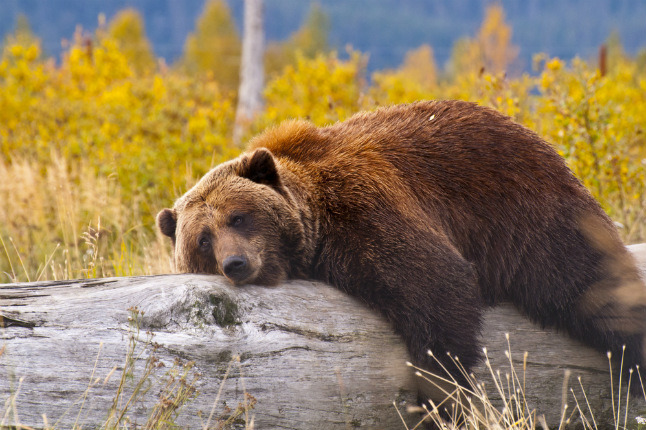Open Season On Yellowstone Grizzlies?
It's been 38 years since grizzly bears were placed on the Endangered Species list. In that time, they've made a fantastic recovery, rebounding from fewer than 200 in the lower 48 states to the estimated 1,400-plus (including 600 in the Greater Yellowstone region) that roam the West today. They've done so well, in fact, that the U.S. Fish & Wildlife Service (USFWS) is ready to declare conservation victory, and has plans in the works to de-list the bears throughout the Yellowstone ecosystem by early 2014.
But what sounds, on the surface, like great news—recovery! success! victory!—has some conservationists worried. They see a precarious recovery that accounts for only a small fraction of the estimated 50,000 grizzlies that once roamed the West, and all of it confined to six closely watched and provisioned "recovery zones" that are spread across the Northern Rockies and Cascades. More importantly, they see that stripping the bears of their federal protections here would put their fates into the hands of state governments—Wyoming, Idaho and Montana—that seem all too eager to take over "management" of what some are now considering "nuisance bears."
See, all around Yellowstone, the rising grizzly bear population is increasingly running up against human development. In the past three years alone there have been four fatal attacks on humans, where, for the previous 24 years, there had been none. This has Wyoming, which accounts for the vast majority of the grizzlies' safe haven, already pushing for a trophy bear hunting season. Wyoming politicians—and the ranchers who back them, think bears pose too great a threat to livestock and humans.
This isn't the first effort to de-list the grizzly. They were briefly removed in 2007 and, at the time, federal officials unveiled a plan that would allow the states to hunt and kill a specific percentage of the total bear population each year in order to stabilize their numbers. As outlined in this 2006 story from Wyoming's Casper Star-Tribune, "The state[s] will be able to 'parcel and direct' bear mortality to areas with high conflict potential, high mortality risks and dwindling habitat and food sources, based on the best science available." In other words, the states could kill the bears wherever they were causing the most trouble. Back then, they were planning to keep the bears out of some areas—the Salt and Wyoming ranges, as well as the southern Wind River Mountains—that the original federal recovery strategy considered prime grizzly habitat.
In 2009, however, an appeals court reversed the de-listing because of low white bark pine numbers, the seeds of which are a major source of food for grizzlies. The white bark pine is now under review for 2014 as well, which will have an impact on the ultimate decision regarding the bears.
But the conservation "victory" once again being claimed by USFWS is not so simple, say conservationists. "The gains are precarious," Louisa Willcox, of the National Resources Defense Council, told Outside. "You can turn increased numbers into a decline very quickly."
The mighty grizzly has a very low reproduction rate. And while minimum estimates place the Yellowstone grizz population around 600, Chuck Neal, retired ecologist for the Interior Department and author of Grizzlies in the Mist, thinks those numbers are more akin to an "open-air zoo" than a thriving population. Throughout the Northern Rockies, where the habitat is suitable to support grizzlies, their minimum population should be several thousand strong. And that's not a number state governments, particularly Wyoming, are comfortable with.
"The states want the keys to the car, and when they get them, they will do what they're doing with wolves now—they'll hunt them," Willcox says.
For now, what happens to the grizzlies' is in the hands of the U.S. Fish & Wildlife Service. Will they go the way of wolves—and find themselves staring down the barrel of a gun—or will they get a new lease on life and a chance at full recovery?
